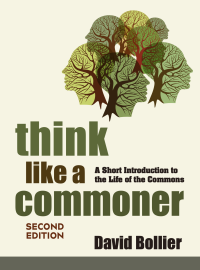It is the conceit of the digital age that online literary collaboration is utterly new. And, of course, it is, in its way. Dan Gillmor, former tech columnist for The San Jose Mercury News who is now championing “grassroots journalism,” asked readers to give him feedback for the chapters of his book, We the Media, as he was writing it. J.D. Lasica, author of the forthcoming Darknet: Hollywood’s War Against the Digital Generation, did the same (more about Darknet in a future post). Lawrence Lessig has just put his 1999 book Code online to invite readers to do an updated remix of it. Then of course there are wikis, open source projects, collaborative archives, and so on.
All of these experiments are very cool. Who knows which ones will survive and what organizing principles will prove critical? What really interests me is the new power to elicit and represent the “group mind,” perhaps the most important innovation spawned by the Internet. We high-tech moderns like to think we have little connection to the past, but as I pondered the new online collaborations, I couldn’t help thinking that we could benefit from considering one of the greatest literary collaborations in history, the King James Bible. It’s on my mind because lately I’ve been reading God’s Secretaries: The Making of the King James Bible (HarperCollins, 2003), by Adam Nicolson.
God’s Secretaries is a fascinating account about how and why King James organized a massive project in the early 1600s to produce a fresh translation of the Bible. One motive was frankly political. The new translation, writes Nicolson, “had the potential to become, in the beautiful phrase of the time, an irenicon,a thing of peace, a means by which the divisions of the church, and of the country as a whole, could be encompassed in one unifying fabric founded on the divine authority of the king.”
King James and Richard Bancroft, the Archbishop of Canterbury and the principal organizer of the translation, created a translating committee with six subcommittees known as “companies,” each of which would have nine members – for a total of 54 translators who represented a wide diversity of religious, regional and political thought, not to mention personal temperament and experience. The process for conducting the translation ensured that there would be room for individual creativity by each carefully selected scholar and divine, but also a means for deliberation, review and accountability. Nicolson writes:
As with any complex project, all parts had to be advanced at the same time. There could be no waiting for money before the other elements – above all the organization, the control and checking systems were in place. Bancroft recognized from the start that the translation had to be a joint enterprise.
Jointness was the acknowledged virtue of the age. Most of the plays performed in Jacobean England were written by more than one writer. A joint translation was completely concordant with the ideology of the time. Lack of jointness, either through an overweening individuality or through simple dissolution, a falling apart, was considered an overriding error and a sin.
The jointness on which so many of the moralists of the time lay such emphasis was an attempt to mend the cracks which the eruptive egotism of the time was opening. It is the great and tragic theme of King Lear that selfhood and disunity, a natural urge in man, nevertheless destroy the life they aim to elevate. Jointness, by contrast, was slow and careful. It required consultation, the gradual application of principles, not their violent banging in. Fair and softly goeth far: the irenicon of the new translation was to be a joint product.
Everything in the modern frame of mind, trained up on centuries of individualism, and on the overriding importance of individual freedoms, rebels against the idea. Joint committees know nothing of genius. They do not produce works of art. It is surely lonely martyrs who struggle for unacknowledged truths.
Nicolson goes on to compare the King James Bible to “England’s equivalent to the great baroque cathedral it never built, an enormous and magnificent verbal artifice, its huge structures embracing all four million Englishmen, its orderliness and richness a kind of national shrine built only of words.” Not only was it unlikely that any individual could have built such a “cathedral,” he writes, it was imperative that the translation be made by many: “The only mind that could have produced the King James Bible was the mind of England itself.”
All of this got me to wondering: Now that we have one of the greatest scaffolding systems in human history, the Internet, what cathedrals will we build?











Recent comments